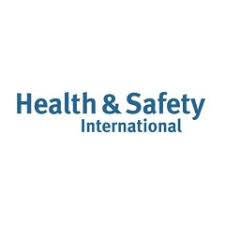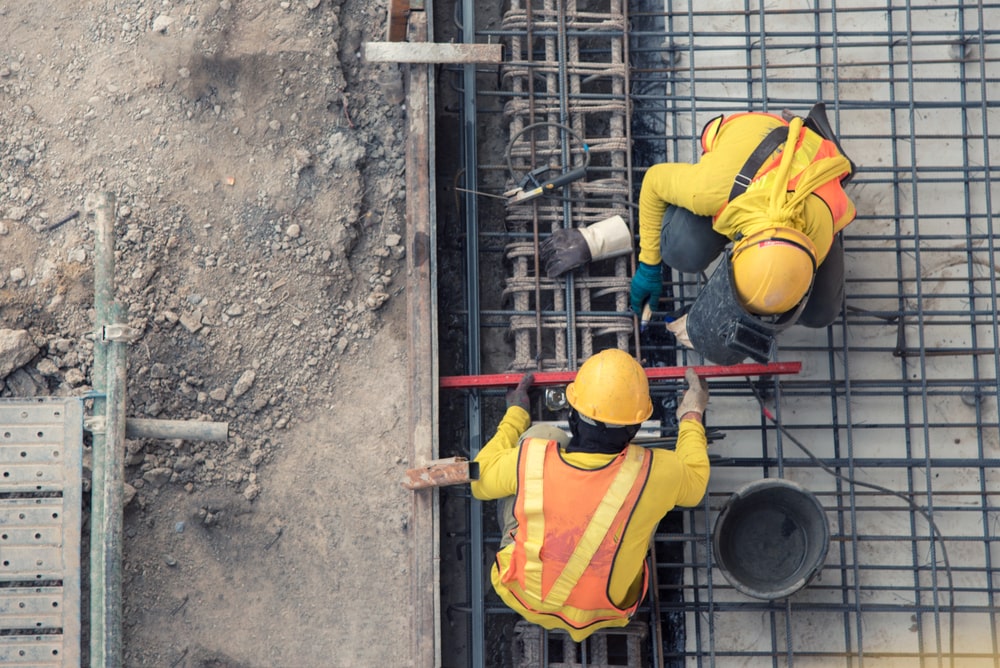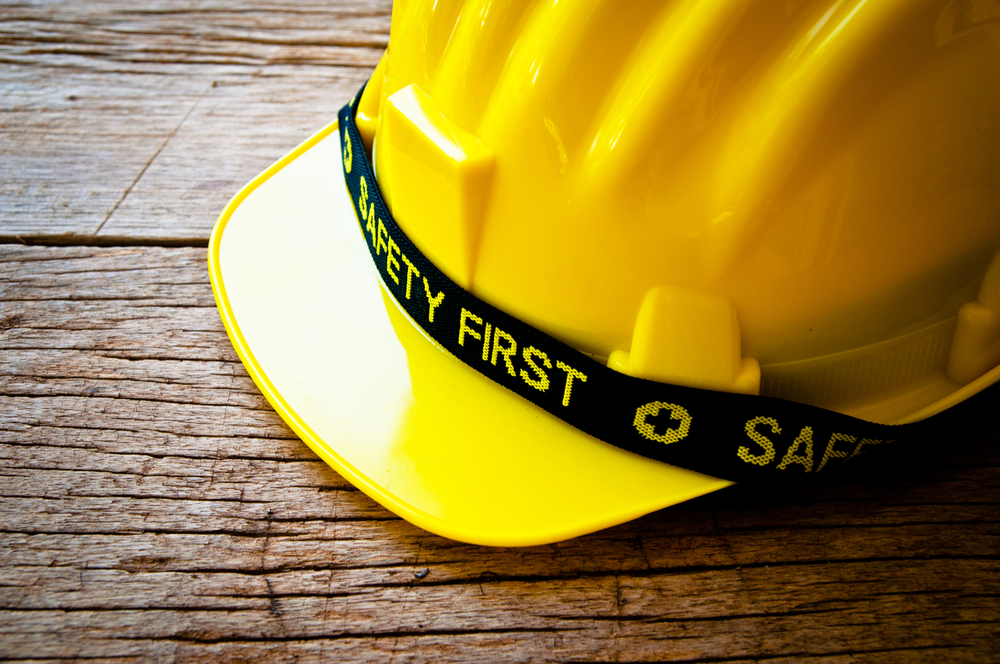News Post
August 2016 Newsletter
HSE Decisions
Company fined £100,000 after an agency worker was injured when he fell two metres from a ladder.
Scarborough Magistrates’ Court heard how an agency worker employed with Pauls Malt Limited at their West Knapton malting factory, near Malton, was injured when he fell approximately two metres from a ladder. He sustained two fractures to his right foot and bruising to his chest and head injuries.
An investigation by the Health and Safety Executive (HSE) into the incident found that the company had not carried out a suitable and sufficient risk assessment of the work at height.
A system of work had developed which involved propping a 4-metre long ladder which was too long for its purpose and was propped at too shallow an angle. The ladder slipped outwards at the foot causing the agency worker to fall with the ladder.
Pauls Malt Limited (trading as Boortmalt), of Eastern Way, Bury St Edmunds, Suffolk, pleaded guilty to breaching Section 3(1) of the Health and Safety at Work etc. Act 1974, and was fined £100,000 and ordered to pay costs of £2,257.
Working at Height (Recap)
What is working at height?
In simple terms working at height is when a person could fall a distance liable to cause personal injury. You are working at height if you:
- work above the ground
- could fall from an edge or through an opening/surface
- could fall from ground level into an opening in the floor or hole in the ground
Falls from height are the most common cause of fatalities in the workplace. Latest figures from the HSE show that on average there are 39 fatal injuries from falls from height a year.
Before working at height work through these simple steps:
- avoid work at height where it’sreasonably practicable to do so
- where work at height cannot be easily avoided, prevent falls using either an existing place of work that is already safe or the right type of equipment
- minimise the distance and consequences of a fall, by using the right type of equipment where the risk cannot be eliminated
Dos and don’ts of working at height
Do….
- as much work as possible from the ground
- ensure workers can get safely to and from where they work at height
- ensure equipment is suitable, stable and strong enough for the job, maintained and checked regularly
- take precautions when working on or near fragile surfaces
- provide protection from falling objects
- consider emergency evacuation and rescue procedures
Don’t…
- ·overload ladders – consider the equipment or materials workers are carrying before working at height. Check the pictogram or label on the ladder for information
- ·overreach on ladders or stepladders
- rest a ladder against weak upper surfaces, eg glazing or plastic gutters
- use ladders or stepladders for strenuous or heavy tasks, only use them for light work of short duration (a maximum of 30 minutes at a time)
- let anyone who is not competent (who doesn’t have the skills, knowledge and experience to do the job) work at height
Talk About Cases:
Construction firm fined £143,000 after worker falls down a lift pit
Cardiff-based construction company, Jehu Project Services Ltd, has been sentenced after a worker was seriously injured falling down a lift pit. The incident happened on 8 July 2015 at a construction site in Pontcanna, Cardiff. Stephen Harrison, a specialist drilling contractor, was employed by Jehu to help refurbish a 73-bed care home when he fell into the basement of a lift pit that was under construction.
Mr Harrison stepped onto the ground floor having been working off a tower scaffold, but stood on a loose concrete block causing him to fall backwards, head-first, into a skip full of rubble on the floor below.
A specialist Fire and Rescue team were nearby and after stabilising Mr Harrison, attached him to the hook of a tower crane and winched him out of the pit, over the site and into the carpark of a housing estate nearby where an ambulance was waiting.
Mr Harrison suffered shattered vertebrae, five broken ribs, a punctured lung and spent 18 days in hospital. He is still recovering and although not paralysed, his injuries were life-changing and he will not return to work.
HSE investigated the incident and found that Jehu had been using a system of lightweight barriers around the edges of the drop, along with bean bags at the bottom of the hole, but these were incompatible with all of the work that needed to be done by the different contractors and had been removed. Following the incident, all of the danger areas were fenced with scaffolding.
Jehu Project Services Ltd pleaded guilty to breaching Construction (Design and Management) Regulations 2015, Regulation 13(1) and Work at Height Regulations 2005, Regulation 6(3) and was fined £143,000 and ordered to pay full costs of £15,029.30.
HSE Inspector Liam Osborne, who brought the case, said: “It is crucial that construction firms properly think through the risks involved before starting work, they then need to ensure there is a workable plan to iron-out or manage the resultant dangers.
“There is a clear hierarchy for managing work at height risks, site managers need to prevent it if possible and then provide suitable fixed barriers. Lower-order measures, such as soft-landing systems or the use of harnesses should only be selected as a last resort and if it is safe and appropriate to do so”.
Worker suffers serious burns after clothing catches fire
A foundry based in Batley has been fined after a worker suffered serious burns when his clothing caught fire.
Bradford Crown Court heard how an employee of Batley Foundry Limited was undertaking work involving the use of isopropanol and a paint-like solution. The bucket containing the solution caught fire which then set light to his clothes, causing serious burns.
An investigation by the Health and Safety Executive (HSE) into the incident which occurred on 5 August 2014 found that the company failed to provide adequate training, work equipment and personal protective equipment (PPE).
Batley Foundry Limited, of Warwick Road, Batley, pleaded guilty to breaching Section 2(1) of the Health and Safety at Work etc. Act 1974, and was fined £15,000 and ordered to pay costs of £9000.
Speaking after the hearing, HSE Inspector John Boyle said:
“A worker was left with serious injuries as a result of this incident. Had the company taken a number of simple measures prior to the work activity taking place – such as the provision of suitable work equipment, training and personal protective equipment – then it may well have been avoided.”
Engineering firm found guilty of breaching PUWER (1998) and fined £14,000 after worker loses finger in lathe machine
A Hampshire based engineering firm has been fined after a worker severed a finger in a metal working lathe.
Portsmouth Magistrates’ Court heard how the company had allowed the custom and practice of defeating interlocks on CNC metal working lathes to develop. This meant that machines could be operated whilst allowing access to the moving parts.
An investigation by the Health and Safety Executive (HSE) into the incident which occurred on 3rd July 2015 found that the worker’s hand had come into contact with the moving parts of the machine whilst he was attempting to release a jammed work-piece. This resulted in one of his fingers being severed.
Repro Engineering Limited, of Aysgarth Road, Waterlooville, Portsmouth, pleaded guilty to breaching Regulation 11(1) of the Provision and Use of Work Equipment Regulations 1998, and was fined £14,000 and ordered to pay costs of £2,222.
HSE Inspector Frank Flannery speaking after the case said: “This incident could have been prevented by more active and robust management action, it sends out a message to employers that tampering with safety devices can lead to injury and prosecution”
Hand Arm Vibration (HAV) (Recap)
Hand arm vibration comes from the use of hand-held power tools and is the cause of significant ill health (painful and disabling disorders of the blood vessels, nerves and joints), nearly 2 million people are at risk. Hand Arm Vibration is largely made up of two conditions, Vibration White Finger (VWF) and Carpal Tunnel Syndrome (CTS). Damage from HAVS can include the inability to do fine work and cold can trigger painful finger blanching attacks. HAVS is preventable, but once the damage is done it is permanent.
.You are at risk if you regularly use hand-held or hand guided power tools such as:
- Sanders, grinders, disc cutters
- Hammer drills
- Chipping hammers
- Concrete breakers, concrete pokers
- Chainsaws, brush cutters, hedge trimmers
- Powered mowers
Early Signs and symptoms include:
- Tingling and numbness in the fingers (which can cause sleep disturbance).
- Not being able to feel things with your fingers.
- Loss of strength in your hands (you may be less able to pick up or hold heavy objects).
- In the cold and wet, the tips of your fingers going white then red and being painful on recovery
If you continue to use high-vibration tools these symptoms will probably get worse, for example:
- The numbness in your hands could become permanent and you won’t be able to feel things at all;
- You will have difficulty picking up small objects such as screws or nails;
What should I do as an employer?
- Find out from your employees and their supervisors which, if any, processes involve regular exposure to vibration (eg processes using the equipment listed in ‘Which jobs and tools produce a risk?’ or other vibrating equipment);
- See whether there are any warnings of vibration risks in equipment handbooks;
- Ask employees if they have any of the HAVS symptoms described in these web pages and whether the equipment being used produces high levels of vibration or uncomfortable strains on hands and arms.
- Assess who is at risk
If there is likely to be a risk you need to assess who is at risk and to what degree. The risk assessment needs to enable you to decide whether your employees’ exposures are likely to be high or low risk and to identify which work activities you need to control. You could do the risk assessment yourself or appoint a competent person to do it for you.
For details on your role as an employer visit:
http://www.hse.gov.uk/vibration/hav/advicetoemployers/assessrisks.htm
In 2015 a Ltd Company was fined £14,000 for breaching the Control of Vibration at Work Regulations 2005 at Nottingham Magistrates’ Court. An employee of UPP (Broadgate Park) Limited operated mowers, strimmers, and a leaf blower as part of his work for the company, and was regularly exposed to levels of vibration which were above the Exposure Limit Value and Exposure Action Value. He reported ill health symptoms to his line manager but no action was taken.
UPP (Broadgate Park) Limited, of Gracechurch Street, London, was prosecuted by the Health and Safety Executive and pleaded guilty to Section 2(1) of the Health and Safety at Work etc. Act 1974 and Regulation 5(1) of the Control of Vibration at Work Regulations 2005 and fined a total of £14,000 and ordered to pay full costs of £1,943.
On Face Fit testing for a limited time only!
Call now for more information!
Tel: 01937 836111
IOSH Managing Safely
The next course(s) are:
07, 08, 14 & 15 September 2016
05, 06, 12 & 13 October 2016
09, 10, 16 & 17 November 2016
Venue:
The Bridge Hotel Wetherby LS22 5HS
All details of the courses are on the SMSE website
For special delegate rates & more details contact:
Tel: 01937 836111
Email: office@smseurope.co.uk
Web: www.smseurope.co.uk
“Terms and Conditions Apply”
IOSH Working Safely
The Working Safely course is recognised by CSCS as an equivalent to a Level 1 Award in Health & Safety in a Construction Environment. Which means that delegates who successfully complete Working Safely can apply for a CSCS green Labourer card once they have passed the CITB Health, Safety & Environment Operatives Test.
This one-day course can be carried out at your premises
For delegate rates and more details contact:-
Tel: 01937 836111
Email: office@smseurope.co.uk
Web:www.smseurope.co.uk
Now Available
On line e-learning Health & Safety Courses
E-leaning makes it easier to meet your Heatlh and Safety training needs and only pay for what you need!
Choose when you want to learn and for how long with no need to travel!
All courses certified.
| Courses Available:
|
| Save on your safety supplies and personal protective equipment (PPE) by purchasing direct from us.
Please do not hesitate to contact us if you need advice on what you need. No order too small. Order today!Email: office@smseurope.co.uk
|
 |
Latest News
Health and Safety in Schools Checklist
Health and safety should be a top priority in any workplace, but especially in schools. Not only are you responsible for your staff’s safety, but you need to maintain the welfare of your pupils too. To do so, you must uphold your legal complian..
It can be difficult to decide your future path - a lot can ride on it, after all - but a career in health and safety could be the right choice for you. There are several types of careers in the health and safety industry that might be a good fit..
What is ISO 45001?
If you’re wondering what ISO 45001 is, then this is the guide for you. Replacing the old OHSAS 18001 standard, ISO 45001 is the new international standard for occupational health and safety management. In this guide, we'l..
Who Enforces Health and Safety?
The enforcement of health and safety is crucial to maintain healthy workplaces. The term health and safety itself covers the safety legislation and safety law that comes under the Health and Safety at Work Act 1974. In general, this means t..
Health and safety training is a requirement in the workplace, no matter which sector you work in. Our experts at SMS Europe have been providing an extensive range of specialist health and safety services for almost 20 years. To help make work en..
Health and safety in the workplace is all about controlling risks in a way that protects both your employees and your company. Strong leadership, including your employees, managers, suppliers, contractors, and consumers, is a characteristic of great ..
Health and safety in the workplace is immeasurably important. But, without the Health and Safety at Work Act of 1974, we might have never prized safety so highly. This piece of workplace legislation is highly significant and indeed has transform..
Fire Safety and Fire Risk Assessment at Leased Offices and Buildings Fire safety at leased single and multi- tenanted offices can be approached in a number of ways. Generally speaking, there are three types of premises, (single occupancy lea..
Safety Gloves
Please have a read at SMSE Managing Director Philip Marsden's article on Safety Gloves which is published in the February 2022 edition of Health and Safety International Magazine. https://www.hsimagazine.com/article/fits-like-a-glove/ We wo..
Current Health and Safety Industry Trends
New Guidance Released for Managing Home Workers As an employer, you have the same health and safety responsibilities for those who work from home as you do for all other employees who may work from the workplace. In most cases, the dange..
Who Is Responsible for the Health and Safety on a Building Site? Legally, the responsibility of health and safety within the business lies with the employer. It is up to them to make sure the environment meets the necessary health and safety requi..
No one wants to be injured whilst at work, and no one wants their staff to be injured, especially whilst on the job. That doesn’t mean that accidents don’t happen. In fact, each year an average of 22 manufacturing workers die in workplace..












